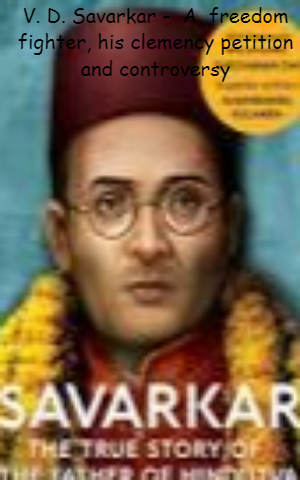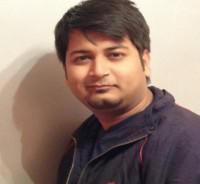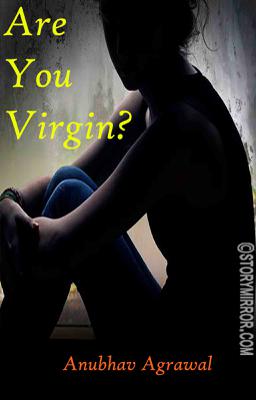V. D. Savarkar - A freedom fighter, his clemency petition and controversy
V. D. Savarkar - A freedom fighter, his clemency petition and controversy


Vinayak Damador Savarkar, born on 28 May 1883 in the Marathi Chitpavan Brahmin Hindu family near the city of Nashik, Maharashtra was a freedom fighter, political activist and writer, who developed the Hindu nationalist political ideology of Hindutva, while imprisoned at Ratnagiri in 1922. He was a leading figure in the Hindu Mahasabha. He started using the honorific prefix Veer meaning “brave” when he wrote his autobiography.
His opposition political parties branded him a BJP-RSS mascot. These parties, particularly, Congress criticize him for his clemency petitions to British authorities, saying ‘I beg to remain your most obedient servant’ in his one purported letter. However, such comments trigger controversy about its truthfulness.
In a similar vein, Christophe Jaffrelot (French political scientist) makes sweeping and inaccurate remarks against Savarkar in “The Nationalism of Savarkar(IE November 3, 2022).” He criticized Savarkar saying, he pitted the Hindus against Muslims and for collaborating with the colonial British administration.
In the historical record, it must be noted that Savarkar initially belonged to the militant nationalism unlike the mainstream pre-Gandhi Congress policy of mendicancy, preferring salvation through revolutionary violence to overthrow the British Rule in India. In 1908, Savarkar met Gopal Krishna Gokhle and RC Dutt and told them he was planning to write a book reinterpreting the 1857 revolutionary uprising from the nationalist point of view.
Savarkar called the 1857 uprising the first war of independence and was categorical that Indian independence would be attained with the joint efforts of Hindus and Muslims. He studied European history and attained in-depth knowledge of Europe’s politics. Europe was religiously homogenous while India was heterogeneous. There was always tension and mutual distrust between the Hindus and Muslims. He feared the conversion of Hindus to other faiths, which was a continuous process since Aurangazeb period, and then during British rule by Christian missionaries. He tried his best to stop this kind of conversion. But he was not a Hindu zealot and did not advocate a religious sectarian line. He just wanted to protect Hindus during the Khilafat movement, where people were instigated in the name of religion. Jati, upajati, and untouchability in Hindu society raised their ugly head. Savarkar wanted to establish a cashless society so that Hindus became only a whole community. In 1931, Savarkar built the Patipavan Mandir in Ratnagiri for all to pray. At that time Bhimrao Ramji Ambedkar praised Savarkar saying, his efforts would save the country from the curse of varnashrama.
Savarkar developed Hindu National Political ideology of Hindutva. He was a leading figure of Hindu Mahasabha and popularized the term Hindutva previously coined by Chandranath Bose. He began his political activities as High School student and continued to do so at Fargusan College in Pune. However, he was a brilliant student. Lokmanya Tilak, the radical nationalist leader was impressed with the young student and helped him obtain Shivaji Scholarship in 1906 for his Law studies in London. In London, he involved himself with organizations such as India House and Free India.
Society. He published many books, one of them was The Indian War of Independence, about the Indian Rebellion of 1857. The book was banned by British colonial authorities. His stay in London was full of radical political activities, being influenced by Madanlal Dhingra, who was sentenced to death in connection with assassination of Curzon Wylie, a colonial officer. Savarkar met Mahandas Gandhi for the first time in London after Curzon Wylie’s assassination. Gandhi debated Savarkar and other national leaders in London on the futility of fighting the colonial state through act of terrorism. But one thing, despite the turbulence, he passed the final examination of the Gray’s Inn – one of four inns of Court of London (Bar at Law). He was a very good writer but did not abstain from revolutionary activities and ultimately on 13 March, 1910 he was arrested in London on multiple charges, including procurement and distribution of arms, waging war against the state and other anti-state activities. Considering many aspects of legal and administrative issues British authorities decided to try him in India. He was transported to a ship Morea with police escort. When the ship docked in the French Meditarian Port of Marseille, Savarkar escaped by jumping from ship’s window, swam to the French shore and asked the political asylum. The French Port officials ignored his pleas and handed him back to British captors. But when French government could know the circumstances under which Savarkar wanted asylum, they appealed to the Permanent Court of Arbitration to bring him back. But the Court in its verdict on 24 February, 1911 approved Savarkar’s handing over to British authorities and he was handed over to the British authority. After that he was immediately transported to Bombay (renamed Mumbai.) Arriving in Bombay, Savarkar was taken to Central Jail in Pune. The trial before the Special Tribunal was started on 10 September, 1910. The charges were many: 1. The abetment to murder of Nasik Collector, A.M. Jackson. 2. Waging a conspiracy under penal code 121-A against the King Emperor. Following the two trials, Savarkar then aged 28, was convicted and sentenced to 50-years imprisonment and transported on July 1911 to the infamous Cellular Jail in the Andaman and Nicobar Islands (Kalapani) as political prisoner.
At Cellular Jail, Savarkar subjected to unconscionable torture and inhumane treatment that tested the limit of his conviction. His extradition to India and eventual double life imprisonment to be served at infamous Kalapani prison, christened of the darkest chapter in Savarkar’s life. He was reportedly, restrained in chains, flogged and put to six months solitary confinement. Unlike numerous political prisoners who were driven to insanity or committing suicide, Savarkar showed remarkable resilience and fought for remedy of such unbearable torture. Undoubtedly, being one of the most politically influential characters in the Indian History of freedom fighters, Savarkar is often bestowed with the moniker, “The Father of Hindutva”, notably for his enunciation of the Hindutva ideology, which he expressed in his landmark piece of Literature.
A month after arriving in the Cellular Jail, Savarkar submitted his first clemency petition on 30 August, 1911. The petition was rejected outright on 3 September, 1911. In 1913, Savarkar along with a number of other inmates carrying out hunger strike against inhumane treatment of prisoners at the prison. His undaunted actions received the notice of Sir Reginald Henry Craddock, a Home Member of Indian government, who granted him permission to issue petition for his release. Savarkar submitted his next clemency (mercy) petition on 14 November, 1913 and presented it personally to Sir Reginald Craddock. In his letter, he described himself a prodigal son longing to return to the “parental doors of the government”. He also wrote that his release from the jail would recast the faith of many Indians in the British Rules. In 1917, Savarkar submitted another clemency petition, this time for a general amnesty of all political prisoners. Savarkar was informed on 1 February, 1918 that the petition was placed before the competent authority for consideration. In December 1919, there was a royal proclamation by King George V. The Paragraph 6 of this proclamation included declaration of Royal Clemency to political offenders. In view of Royal proclamation, Savarkar wrote the fourth mercy petition to the British government on 30 March, 1920. That petition was also rejected on 12 July 1920 by the British government.
Meanwhile, following the closure of prison at Port Blair, Savarkar was deported to Ratnagiri prison in May 1921, where also the torture to prisoners were continued. His memoirs reveal that he contemplated suicide multiple times feeling that all his efforts for India’s freedom had come to a naught. On those British colonial days, it was quite impossible to influence the court for release of revolutionary leaders. Narayan Savarkar, brother of Vinayak Damodar Savarkar wrote M.K. Gandhi to request British government for release of prisoners, including his brothers, who were detained in jail for false political vendetta. He also informed that, a list was prepared for the release of the prisoners, where Savarkar brothers were not included. However, if they were released from jail, they would be obliged to work according to Reforms Act.(Ref. Young India). There were two three correspondences between Narayan Savarkar and MK Gandhiji. On January 25, 1920, Gandhiji wrote a brief letter to Narayan Savarkar from Lahore addressing, “Dear Dr. Savarkar” where he stated that, going through the facts of the case, it revealed that “the offence committed by your brother, was political. I suggest this in order that it would be possible to concentrate public attention on the case. Meanwhile, as I have said to you in an earlier letter, I am moving in the matter in my own way.” Four months later, on May 26, 1920 Mahatma Gandhi wrote a detailed argument for the release of Savarkar Brothers in Young India. His article titled “Savarkar Brothers.” In the article, he mentioned “It is my earnest desire at this time that so far as possible any trace of bitterness between my people and those who are responsible for my Government should be obliterated.” Gandhi further wrote appreciating the efforts of the imperial and provincial governments for the release of political offenders. “But there are some notable offenders who have not yet been discharged. Among these I count the Savarkar Brothers.” Mahatma Gandhi wrote very good words about both Savarkar Brothers. On Veer Savarkar, Mahatma Gandhi wrote,”He is better known for his career in London. He is the author of the proscribed history of Sepoy Mutiny of 1857. He was tried in 1910 and received the same sentence as his brother on 24th December, 1910. He was also charged in 1911 with abetment of murder. No act of violence was provoked against him either. Further Savarkar Brothers do not entertain any revolutionary ideas. On the contrary, they feel that India’s destiny can be best worked out in association with British.” Finally, Mahatma Gandhi put further his views saying “I hold therefore that unless there is absolute proof that the discharge of the two brothers can be proved to be a danger to the state, the Viceroy is bound to give them their liberty. In addition, during 1920-21 Vittalbhai Patel and Bal Gangadhar Tilak also pleaded for Savarkar’s release.
He was released on 6 January, 1924 by the British officials after series of mercy petition received for dispensation, but confined to Ratnagiri district. Knowing well that, he was prohibited from any political activity, he could only do it indirectly. He was a leading figure in Hindu Mahasabha and popularized the term Hindutva. Finally Savarkar Brothers were unconditionally released in 1937 by newly elected Bombay Provincial government. Immediately after his release, he got elected as President of Hindu Mahasabha in 1937. He was undaunted. Savarkar considered Congress policy was not correct. Under Savarkar, Hindu Mahasabha openly opposed call for the Quit India Movement of Congress in 1942. During the Second World War he supported the recruitment of Hindus in the British Army. A man who in the first part his liefe wanted Hindu-Muslim unity, nevertheless, in later days became the Father of Hindutva. Therefore, it is still a time to assess his philosophy of Hindutva in freedom struggle, for which he sacrificed immensely.
Regarding his mercy petitions, it may be pertinent to mention that many political or revolutionary leaders during British Raj fought Hon’ble courts or otherwise to get release from prison and there was no any fault in it. Because many a time they were indicted with false charges. We must bow down our heads to Mahatma Gandhi and other leaders who tirelessly supported the release of Savarkar Brothers.
We, as Indians should remind that due to the sacrifice of our leaders, whatever be the path of their freedom movement, we got independence on 15 August, 1947. We may warship them as National Heroes instead of muddling.























































